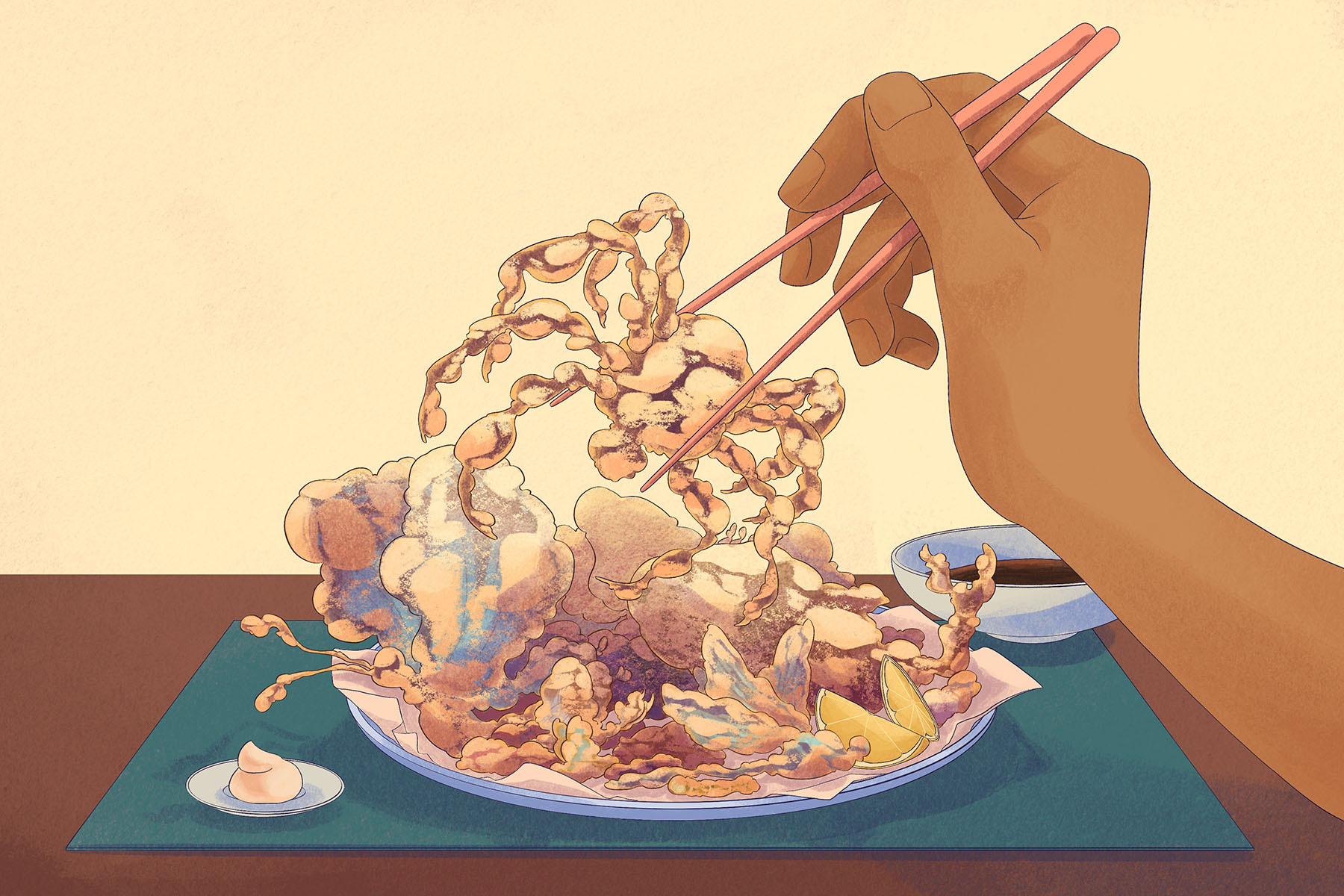There is no everlasting solution to the problems of today and the threats of tomorrow, but that doesn’t mean there isn’t a reason to try. Humans are stubborn creatures by nature, and we avoid making changes that require effort and commitment. However, to survive is to adapt, and to not recognize this fact is to face death and destruction. The obstacles that humanity faces are great, and the necessary steps to overcome them are small but crucial.
It is important to acknowledge that the increasing population requires land to grow crops and raise livestock. This growing hunger results in greater numbers of livestock emitting methane and CO² in the atmosphere, more of the Amazon being cleared for agriculture and over a third of all crops being used as animal feed. If we’re to accommodate a growing population while also considering reducing the effects of climate change, there must be a middle ground that can be met. Fortunately, there is!
The solution is to start eating bugs. That’s right! Crunching on some creepy crawlies could be the next best thing to ending world hunger and reducing climate change. I know what you’re thinking. “Ew! Gross! Eating bugs?! Who in their right mind would even think of such a thing?” Well, actually a lot of people. In fact, about 25% of all people eat bugs worldwide.
The stigma around entomophagy — the practice of eating insects — is mostly a Western/European stigma carried over into the United States. It’s understandable to hate bugs, these pests eat and destroy crops, their bites can be deadly and they look weird and creepy. Arachnophobia remains one of the most common phobias, and the animal that kills the most humans is the mosquito. Your fear and disgust of bugs is justified, but that shouldn’t dissuade you from eating them.
For an argument against conventional livestock, consider the number of diseases that come from barnyard animals: whooping cough, flu, measles, tuberculosis and smallpox. In terms of land usage, consider that two-fifths of all land in the continental United States is devoted to raising livestock; there is more land for feeding cows and other animals than there is for humans. Lastly, consider the health concerns of red meats, like beef and pork, which can drastically raise the chances of diabetes, heart disease and cancer.
Now, for bugs! Let’s focus on crickets. Farmed crickets carry little to no diseases if raised and prepared properly, which involves rinsing and roasting them. Their small size ensures that thousands to millions of them can be raised in a room the size of a garage. Crickets also require fewer resources to survive than cows; they require 12 times less food and 2000 times less water, and they emit one hundred times less greenhouse gas. The vegetables and peelings wasted in supermarkets, restaurants or even a personal fridges can be used to feed crickets.
Last but not least in the competition between crickets and cows, nutrition! Crickets win … that’s it. It’s not even close. Crickets are far more nutritious than beef, 100 grams of crickets carry two to three times the amount of protein in 100 grams of beef. They also contain more essential amino acids and iron, about the same level of calcium and less saturated fat. They also contain a substantial amount of fiber, which beef simply doesn’t have. And to top it all off, you can eat the whole cricket, while only around 60% of a cow is edible.
Looking at the numbers proves that it is substantially more beneficial to raise and consume crickets than cows. They require fewer resources to survive, they emit far less greenhouse gass, the chances of disease transmission are slim to none after proper preparation and they’re some of the most nutritious animals to eat. The only real downsides are the price, since edible insects are rare in the United States, and the stigma around eating bugs. However, this is where it gets crazy … the analysis was just with crickets.
Think about the typical barnyard animals that are consumed in the United States: cows, pigs, goats, sheep and chickens. There are 900,000 identified insect species, and an estimated 10 quintillion (19 zeroes) individual insects alive — that’s 80% of all life on Earth. Even if we cut the number down to the over 2,000 species of edible insects, that’s still 2000 times more choices of species than conventional livestock. If there’s ever a dwindling population of any of the five main barnyard animals — *cough* current egg prices *cough* — then we have thousands of options to fall back on.
Raising and eating bugs isn’t only healthy and efficient, it can also be delicious. Crickets can be ground into a powder for baking or served pan-fried with salt and lemon. Mealworms can be roasted and covered in melted chocolate. Tarantulas can be fried like chicken after removing the fangs and burning off the hairs. Many different cultures around the world have been cooking and eating bugs for thousands of years, there are endless recipes.
If you still have reservations about eating bugs, take a venture into seafood. If you like eating shrimp, crawfish, crab and lobster, then you’ll like eating bugs. They’re all in the same family of arthropods, which contains every insect, spider, scorpion, centipede and even crustacean. If someone says that eating bugs is gross while also thoroughly enjoying shrimp or lobster, their argument is automatically moot.
The advantages of eating bugs are as clear as day. They’re bountiful, easy to farm, they emit very little greenhouse gas, are nutritiously dense and can even be the highlight of a tasty dish. The food surplus to be derived from bugs could feed millions of starving people, create thousands of jobs in farming and reduce the overall effects of climate change. So try a cricket or two and realize that one of the simplest and best ways to help the world is to eat up. Bug appétit!

















